How to Protect Public Revenues From the Next Meltdown
Concerns are growing that we are heading for another banking crisis, one that could be far worse than in 2008. But this time, there will be no government bailouts. Instead, per the Dodd-Frank Act, bankrupt banks will be confiscating (or “bailing in”) their customers’ deposits.
By Ellen Brown, Web of DebtThis piece first appeared at Web of Debt.
Concerns are growing that we are heading for another banking crisis, one that could be far worse than in 2008. But this time, there will be no government bailouts. Instead, per the Dodd-Frank Act, bankrupt banks will be confiscating (or “bailing in”) their customers’ deposits.
That includes local government deposits. The fact that public funds are secured with collateral may not protect them, as explained earlier here. Derivative claims now get paid first in a bank bankruptcy; and derivative losses could be huge, wiping out the collateral for other claims.
In a September 24th article titled “5 U.S. Banks Each Have More Than 40 Trillion Dollars In Exposure To Derivatives, Michael Snyder warns:
Trading in derivatives is basically just a form of legalized gambling, and the “too big to fail” banks have transformed Wall Street into the largest casino in the history of the planet. When this derivatives bubble bursts (and as surely as I am writing this it will), the pain that it will cause the global economy will be greater than words can describe.
The too-big-to-fail banks have collectively grown 37% larger since 2008. Five banks now account for 42% of all US loans, and six banks control 67% of all banking assets.
Besides their reckless derivatives gambling, these monster-sized banks have earned our distrust by being caught in a litany of frauds. In an article in Forbes titled “Big Banks and Derivatives: Why Another Financial Crisis Is Inevitable,” Steve Denning lists rigging municipal bond interest rates, LIBOR price-fixing, foreclosure abuses, money laundering, tax evasion, and misleading clients with worthless securities.
Particularly harmful to local governments have been interest rate swaps misrepresented as protecting government agencies from higher rates.
Yet as Michael Snyder observes:
At this point our economic system is so completely dependent on these banks that there is no way that it can function without them. . . . We are steamrolling toward the greatest financial disaster in world history, and nobody is doing much of anything to stop it.
Sidestepping the Steamroller
California Governor Jerry Brown sees it coming. Rather than rebuilding the state’s crumbling infrastructure, rehiring teachers and other public employees, and taking other steps to restore the Golden State to its former prosperity, he has proposed a constitutional amendment requiring all excess state revenues to go into a rainy day fund to prepare for the next crisis.
But there is a better way forward.
In North Dakota – the only state to post a budget surplus every year since 2001 – the state owns its own bank. When the state last went over-budget in 2001 due to the Dot.com crisis, it merely issued itself an extra dividend through the Bank of North Dakota – the only state-owned depository bank in the country – and the next year it was back on track.
Other local governments would do well to follow suit, not just for the promising profit potential, but as protection against a “bail in” of public deposits.
Forming their own banks can also protect local governments from a looming and unaffordable rise in municipal bond interest rates. State treasurers fear that the Fed’s September 2014 exclusion of municipal bonds from the category of “high quality liquid assets” that big banks must hold will drive up bond rates, as it shrinks the market for those bonds and drives up the interest required to attract buyers.
There is also the big money local governments lose to Wall Street just in fees. A 2013 study found that the city of Los Angeles spends over $200 million annually on big bank fees and management – more than its budget to maintain its extensive streets and highways.
In a recent press conference, Mayor Javier Gonzalez of Santa Fe raised provocative questions facing all elected officials today. He said:
Right now our bank is Wells Fargo. They serve the City according to our contract. But they also take city revenues, taxpayer dollars, and they use those taxpayer dollars as part of their loan portfolio that goes to places outside of Santa Fe and certainly outside of New Mexico. And when you think of that most basic concept of taxpayer money being used to earn revenues for national banks that have reduced their small business lending by 53%, you have to pause and wonder – is this the best structure for our community?
Addressing these concerns, Mayor Gonzalez has launched a formal process to study the feasibility of a city-owned bank of Santa Fe. Public banking efforts are also underway in other cities and states.
How to Start a Bank Overnight
Forming a state or municipal public bank need not be slow or expensive. An online bank could be run out of the Treasurer’s office and operational in a few months. And the bank could be turning a profit immediately – without spending the local government’s own revenues.
How? The way Wall Street does it with our public deposits and investments: by leveraging. We could reclaim those funds and put them to work for our local economies.
The bank could be capitalized with a bond issue (borrowing from the public), and this capital could be leveraged into a loan portfolio that is about eight times the capital base. The bond issue could be financed with 1/8th of the interest accruing from this portfolio. The remaining 7/8th could be pocketed as profit.
This profit could be earned immediately and without risk, by buying municipal bonds rather than issuing loans. That move could also help municipalities, by guaranteeing that their bond rates remain low in the face of threatened interest rate rises on the private market.
How to Start a Bank at Virtually No Cost or Risk
To demonstrate the safety and viability of the model, the bank can start small and build from there. For startup capital, a new bank needs anywhere from a few million to $20 million nationwide. (The amount varies from state to state.) To be cautious and conservative, however, let’s say $40 million.
Many cities have this money available in “rainy day” or reserve funds. Many others have substantial investments, often underperforming, that could be more responsibly invested as an equity position in a bank. In California, for example, a whopping $55 billion is languishing in the Treasurer’s Pooled Money Investment Account, earning a mere 0.23% interest.
Moving a portion of those funds into the state’s own bank would just be good portfolio management. State pension funds are another investment option.
If surplus funds are not available, capital can be raised with a bond issue. (That is how the Bank of North Dakota got its start in 1919.) Assume the interest due on these bonds is 3%. The local government’s cost of funds will be $1.2 million annually.
At a 10% capital requirement, $40 million is sufficient to capitalize $400 million in loans. But again assume the bank is started conservatively at a 20% capitalization, for a loan portfolio of $200 million.
To make those loans, the bank will need deposits. These can be acquired without advertising or other costs, by moving $200 million out of the local government’s existing deposit account at JPMorgan Chase or another Wall Street bank. (In North Dakota, all of the state’s revenues are deposited by law in its state-owned bank.) Assume the new bank pays 0.3% interest on these deposits, or $0.6 million annually as its cost of funds.
To satisfy the 10% reserve requirement for deposits (something different from the capital requirement), $20 million of this deposit pool would be held in reserve. The remaining $180 million are counted as “excess reserves,” which can be used to make an equivalent sum in loans or bond purchases.
Assume the excess reserves are used to buy local municipal bonds paying 3% annually. The return to the bank will be $5.4 million less $0.6 million in interest on the deposits, for a total of $4.8 million annually.
To recoup the cost of the bond issue, $1.2 million can be paid from these profits as a dividend to the local government. The bank will then have a net profit of $3.6 million annually; and this profit will have accrued to the local government as the bank’s owner, without needing to advance any money from its own budget.
What if the state needs its deposits for its budget?
That is the beauty of being a bank rather than a revolving fund: banks do not actually lend their deposits, as the Bank of England recently acknowledged. Rather, they create deposits when they make loans. If the state or local government needs more cash for its operating expenses than the bank has kept in reserve, the bank can do what all banks do: it can borrow. And if it has grown to be a large bank, it can borrow quickly and cheaply – from other banks through the Fed funds market at 0.25%, or from the money market at 0.15%.
A smaller public bank might want to keep a larger cushion of deposits in reserve for liquidity purposes. If it keeps 30% in reserve, in the above example $140 million would be left to invest in bonds, generating $4.2 million annually in interest. Deducting $1.8 million as the cost of servicing deposits and capital, the bank would still generate $2.4 million in profit, while providing a safe place to park public revenues.
What of the bank’s operating costs? These can be kept quite low. The Bank of North Dakota operates without branches, tellers, ATMs, retail services, mega-salaries or mega-bonuses. All those saved costs fall to the bank’s bottom line.
Ballpark operating expenses for a small but growing public bank with a President, Chief Financial Officer, Chief Lending Officer, Chief Credit Risk Management Officer, Compliance Officer, and the systems required to support a banking function are estimated at under $1 million per year. A start-up focused on municipal bonds could be operated for even less. This expense could come out of the initial $40 million in capitalization, again without impairing the local government’s own operating budget.
Manifesting the Bank’s Full Potential
Once a charter has been obtained and sound banking practices have been demonstrated, the capital ratio can be dropped toward 10%. When the bank has built up a sufficient capital cushion, it can begin to work with community banks and other financial institutions for the broad range of commercial lending that creates jobs and prosperity and generates profits as non-tax revenue for the municipality, following the Bank of North Dakota model.
The public bank can also invest in infrastructure loans to the state or local government itself. Interest now composes about half of capital outlays for public projects. Since the local government will own the bank, it will get this interest back, cutting infrastructure costs in half.
These are just a few of the possibilities for a publicly-owned bank, which can provide security from risk while generating a far greater return on the local government’s money than it is getting now on its Wall Street deposit accounts. As we peer into the jaws of another economic meltdown, moving our public funds into our own banks is an investment we can hardly afford not to make.
________________________
Ellen Brown is an attorney, founder of the Public Banking Institute, and author of twelve books, including the best-selling Web of Debt. In The Public Bank Solution, her latest book, she explores successful public banking models historically and globally. Her 200+ blog articles are at EllenBrown.com.
Your support matters…Independent journalism is under threat and overshadowed by heavily funded mainstream media.
You can help level the playing field. Become a member.
Your tax-deductible contribution keeps us digging beneath the headlines to give you thought-provoking, investigative reporting and analysis that unearths what's really happening- without compromise.
Give today to support our courageous, independent journalists.
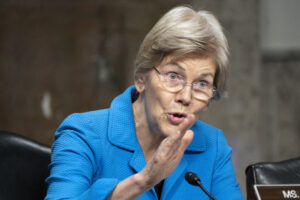
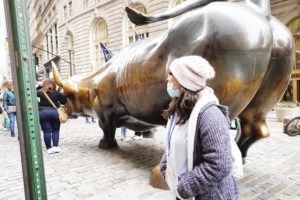
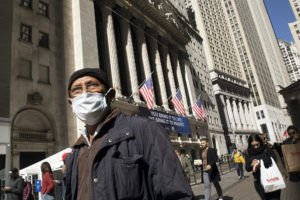
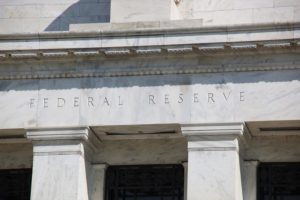
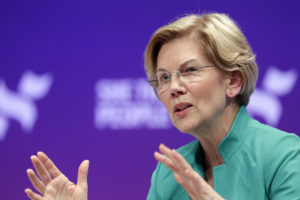

You need to be a supporter to comment.
There are currently no responses to this article.
Be the first to respond.